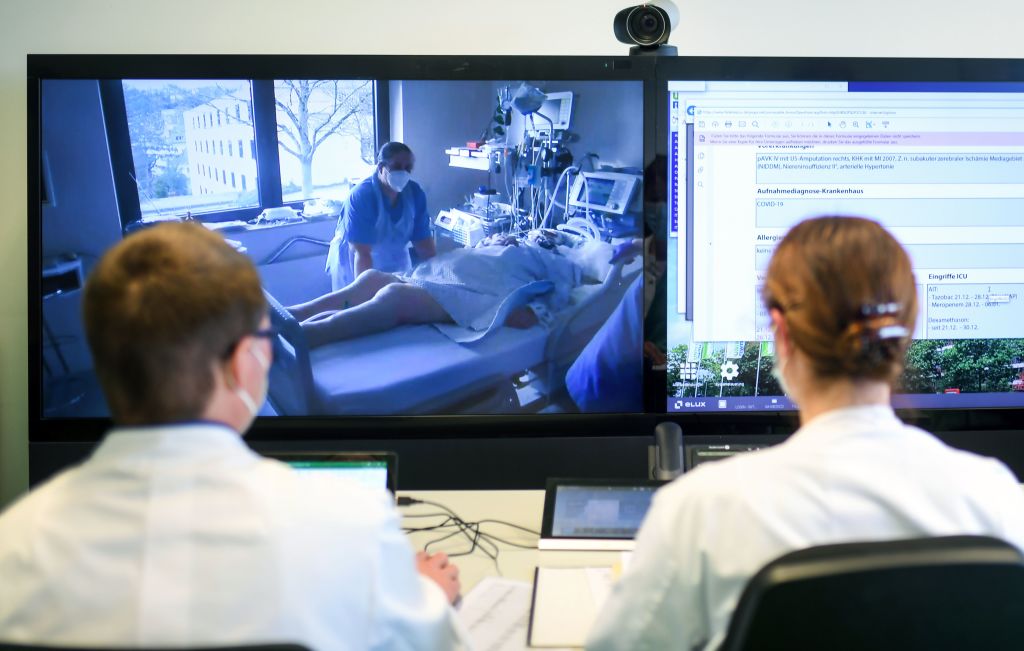The digital healthcare landscape is evolving at a remarkable pace, with innovations and technologies reshaping our approach to health and wellness. As we navigate through 2022, several key trends are emerging that promise to enhance the patient experience and improve outcomes. The insights we glean today will not only define the future of healthcare but also help us adapt to the ongoing challenges posed by chronic conditions and an ever-aging population. Let’s take a closer look at the six trends that are shaping the future of digital healthcare.
1. Expansion of Telemedicine into Chronic Care
The pandemic served as a catalyst for telemedicine adoption, with many patients experiencing virtual healthcare for the first time. According to reports, telemedicine visits surged nearly 40-fold during the height of the pandemic. However, the focus has primarily been on acute care.
As we move forward, telemedicine will play a crucial role in managing chronic conditions. For instance, diabetes will see a significant rise in telehealth facilitation, with leading companies like Teladoc exploring partnerships to manage conditions beyond traditional primary care. Innovations in virtual monitoring for chronic conditions such as heart disease will not only alleviate the burden on healthcare systems but also provide patients with timely interventions without the need for cumbersome travel.
2. Digital Therapeutics on the Rise
Offering a significant opportunity to innovate within healthcare, digital therapeutics (DTx) are expected to thrive in 2022. This sector is distinguished by its ability to engage patients daily and provide measurable health outcomes. Following a remarkable increase in funding, the digital therapeutics market is projected to grow substantially, aiming to reach $13.1 billion by 2026.
Examples like Welldoc, the first FDA-approved diabetes app, illustrate how these solutions are enabling patients to manage their health proactively. Expect to see DTx solutions also find traction in mental health and substance abuse therapy, providing additional layers of data-centric insights that can optimize treatment options.
3. Addressing Social Determinants of Health
Social determinants of health (SDH) encompass the non-medical factors affecting health outcomes, including economic stability, access to nutritious food, and education. Recognizing these factors is critical as nearly 34 million Americans live with diabetes, often hindered by social barriers.
In 2022, healthcare organizations will prioritize the identification and rectification of these inequities. Utilizing advanced data analytics to better understand the socioeconomic determinants underlying health disparities will enable more tailored healthcare interventions and comprehensive management for at-risk populations.
4. The Growth of Remote Patient Monitoring
The global demand for remote patient monitoring (RPM) solutions has accelerated dramatically, fueled by the need for continuous healthcare amidst ongoing healthcare delivery disruptions. Furthermore, RPM technologies support not only patient convenience but also comprehensive data collection that can improve clinical outcomes.
In oncology, for example, RPM can significantly enhance patient care by allowing real-time monitoring of chemotherapy side effects. These insights lead to better preventive care and timely interventions, thus altering the landscape of chronic disease management.
5. Data-Driven Insights to Empower Healthcare
The proliferation of mobile devices, wearables, and sensors has created an abundance of real-world data, which is invaluable in enhancing clinical practices. Companies that effectively aggregate and analyze this data will thrive, deriving insights that are critical for patient care.
The upcoming year will undoubtedly witness a rise in firms focusing on the integration of sophisticated data analytics that can lead to actionable healthcare strategies, making patient outcomes a priority.
6. Heightened Consumerization of Healthcare
The consumerization of healthcare signifies a transformative approach towards patient-centered care. Emphasizing user experience, healthcare providers will increasingly pivot to meet the needs of patients, incorporating elements like personalized treatment plans and user-friendly scheduling tools.
This shift will not only elevate patient satisfaction but will also allow for greater patient control over healthcare decisions, fostering a collaborative environment for treatment outcomes.
Conclusion
The digital healthcare landscape continues to evolve, presenting both challenges and opportunities for healthcare providers, investors, and patients. As we look ahead, the trends emerging in 2022 will likely redefine our healthcare interactions and delivery processes. By integrating technology, addressing social determinants, implementing data-driven strategies, and enhancing the patient experience, we can pave the way toward more effective healthcare solutions.
At fxis.ai, we believe that such advancements are crucial for the future of AI, as they enable more comprehensive and effective solutions. Our team is continually exploring new methodologies to push the envelope in artificial intelligence, ensuring that our clients benefit from the latest technological innovations.
For more insights, updates, or to collaborate on AI development projects, stay connected with fxis.ai.

